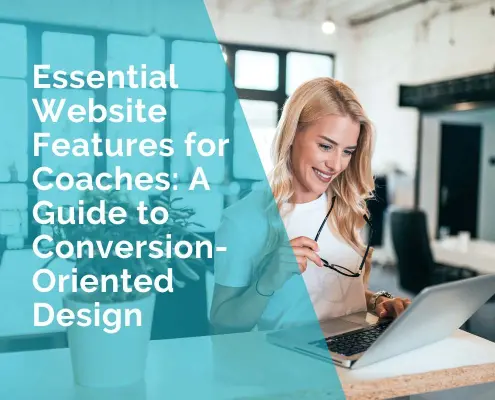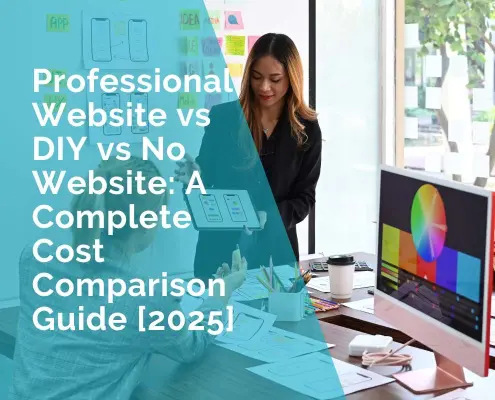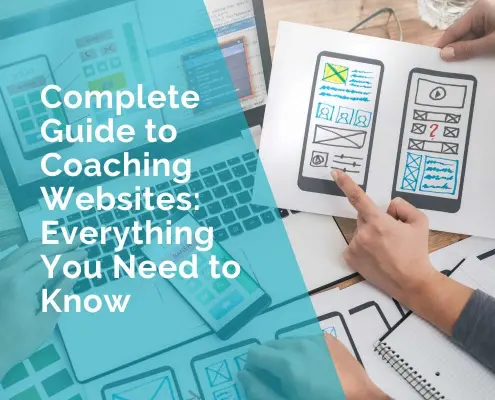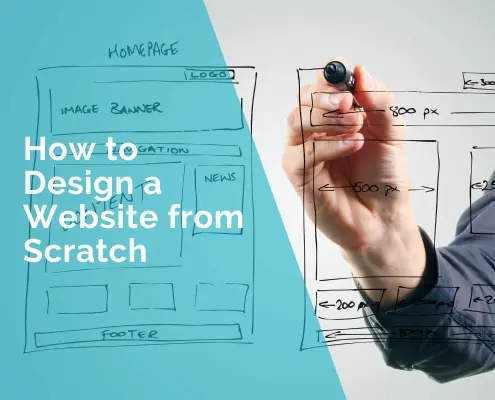How to Create a Landing Page: The Ultimate Guide
A landing page is a web page where your audience comes after following some kind of promotional link. A landing page can stand alone on its own without requiring a full website.
Landing pages are typically used in marketing. They act like a collection pan where customers arrive after following promotional links. The landing page’s job is to convince such people to convert.
The type of conversion depends on the landing page. Some pages are configured for getting people to sign up. Others are designed to make people commit to a purchase. In this guide, we will teach you how to create a landing page.
Steps for Creating a Landing Page
Creating a landing page is easy nowadays because you don’t need any technical expertise like front-end programming. You can just use a design tool to create a landing page.
But we can’t jump into designing straight away, there are plenty of steps involved before it. So, let’s check them out.
1. Identify Your Objective
Landing pages should not be created without some pre-work. The quality of your landing page directly determines the success of your marketing campaign. A poor page will turn away prospective leads, while a good page will convert them. That’s why you need to do some research before you can start designing your landing page.
So, first of all, you want to describe the reason you are creating a landing page concretely. The more details you can add, the better your definition of your goals will be.
Are you running a marketing campaign? Or is the landing page for general use, i.e., getting users to sign up on your platform? Are you advertising some kind of killer deal on your landing page?
Asking these questions will help you understand the purpose of your landing page. Once you have understood the purpose, you will be able to create a design that fulfils that purpose.
2. Learn What Kind of Design Resonates with Your Audience
You will also need to conduct research on your prospective audience. You will need to learn stuff like:
- Their likes and dislikes.
- What kind of design do they prefer
- What kind of design catches their eye?
- What kind of content do they like?
Etc., etc. This research is necessary because it will help you create a landing page that resonates with your audience. A higher resonance will result in more conversions.
You can conduct this kind of research by doing the following things.
Visit forums and websites related to your niche. There, check out the kind of content that is getting more impressions and interaction.
Pick up design clues from these sites.
Use tools like Google Analytics to check which pages on your sites are getting the most traffic. Analyze the design as well as the copy to understand what you are doing right. Do the same with bad pages to learn what you are doing wrong.
Being prudent like this will help you create the best design for your landing page, along with a great copy.
3. Select a Platform Where You can Design a Landing Page
When it comes to designing platforms, there are plenty of options. The good thing is that some great free tools can help you design a landing page.
For example, Canva, Carrd, and HubSpot all offer free landing page designers/creators.
Typically, such tools require registration. They also have premium versions that offer more features. But even with just the limited tools you get in the free version, you can create a solid landing page.
Let’s take a look at Carrd. It starts off by showing you different templates. You can check out different types of templates, such as landing pages, forms, portfolios, etc.
You select a template, and you get taken to a new page where you can edit the design and text. You can change the colours and sizes of everything, and you can even add your own images. The interface is user-friendly and intuitive.
Most landing page designers work in the same way. You also want to check if they let you host the landing page or not. This is only relevant if you don’t have any hosting or don’t want to buy one.
Canva, in particular, lets you host your landing page on its domain (albeit there are limitations).
4. Choose a Template/Design for the Landing Page
When you have selected a good landing page creator, it is time to design the landing page. This landing page design needs to be aligned with the purpose of your landing page.
There are a few things to consider here.
First of all, choose a design that is mobile responsive. Mobile users make up more than 60% of the internet’s traffic. You don’t want to lose so many leads by choosing a poor design.
What is the purpose of your landing page? Is it lead generation, product promotion, content promotion, app download, or event registration?
If the purpose is lead generation, then your landing page design should be simple, clear, and it should emphasize your CTA (call to action). If the purpose is to get people to register or sign up, the design should include a prominent registration form as well as a CTA.
A landing page for app downloads should have a QR code for the app’s store page. A CTA should accompany the QR code to encourage people to scan it and download the app.
As you can see, different purposes require different designs and elements. So, take some time to pick a design template that best suits your needs.
5. Write the Landing Page Copy
Once you have created a good design, it is time to write the copy. The copy of the landing page is just as important as its design. After all, it is the copy’s job to provide information and convince the reader to take a favourable action.
In order to write a great copy, you must follow these guidelines.
Write concisely. Do not write more than you need to. Longer text takes more time to read, and that can turn away many people.
Keep the readability high. You are dealing with normal people, not scientists and literary experts. Keep your vocabulary and sentence structure simple so that everyone can understand your copy.
Add some power words (bombastic adjectives) in your copy. Be sure not to go overboard, though.
Directly address your customer’s pain points. Immediately highlight why the service or product you are offering is good for your customer.
If you can do all of that, your copy will be strong at converting or generating leads.
6. Add a Clear and Strong CTA
CTAs are like the lifeblood of your landing page. No matter what you do or don’t do, you must have a powerful CTA on your landing page. CTAs are known to work because of the human psyche.
Basically, people are generally more willing to do something if they are asked to do it. So, if you include a CTA in your landing page that asks people to do something, they might actually do it.
This is also why your CTAs should be clear. Weak CTAs like “Learn more,” “Click here,” or “Contact Us” will not encourage action because they are unclear.
In contrast, strong CTAs like “Get your quote today” or “Sign up now to get a month free” are much more persuasive.
CTAs can also be supplemented with other techniques. As we mentioned in a previous heading, QR codes that take people directly to download pages can work miracles when paired with a strong CTA.
This works even on desktop because there are tools known as QR code scanners that can decipher images of QR codes. Visitors can simply drag the QR code to the tool to scan it.
You can also provide a link that goes to the same place as the QR code to make it more convenient.
7. Publish the Page and Track it
Once your landing page is created, proofread it and make sure that everything is in order. Then you need to publish it. Now, I don’t think it’s over at this point; it’s not.
You still need to monitor the performance of the landing page. Using a variety of analytical tools like Google Analytics and webpage heatmaps, check how much traffic is coming to the page and where they are clicking the most.
Analyze those areas. If the most activity is around your sign-up or buy buttons, then that’s good, However, if they are clicking on other things more, then you should check what that is.
If the landing page does not perform too well, then you may need to redesign it and maybe even rewrite its copy. If you make any changes, then you will have to monitor those too.
So, it’s an ongoing process, and you will need to stay on top of it to be successful.
In summary, crafting a compelling landing page is pivotal for successful marketing endeavours. Acting as the initial touchpoint for potential customers, its design and content significantly influence conversion rates.
By following the steps provided in this guide – from setting clear objectives to creating engaging copy and incorporating persuasive calls-to-action – you can develop a landing page that truly connects with your target audience and fulfils your goals.
Continuous monitoring and analysis are imperative for refining and enhancing performance. Through ongoing adjustments informed by data and feedback, you can optimize your landing page’s effectiveness and attain your marketing objectives with greater efficacy.
***
by Isabella Rose











